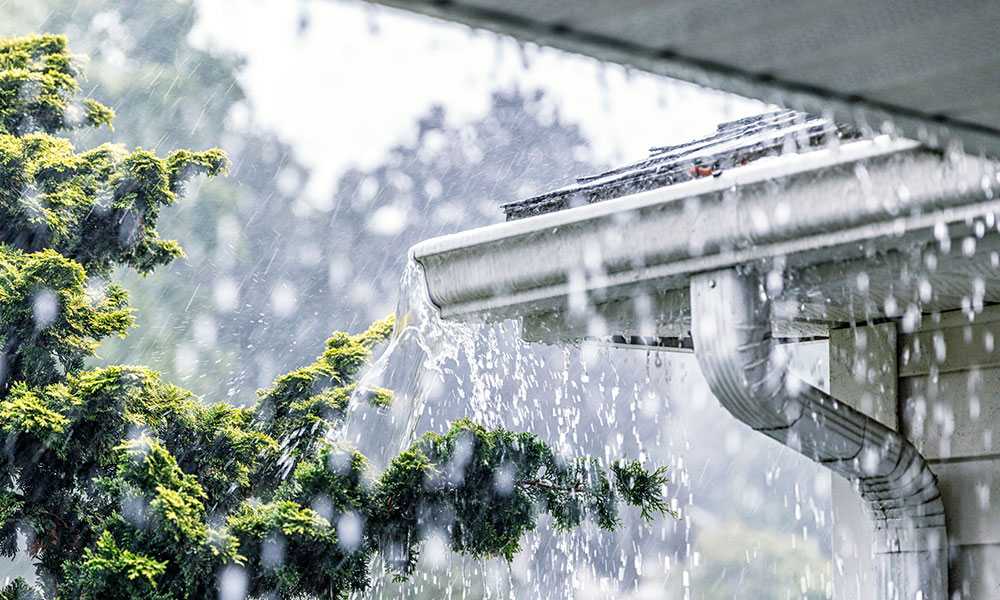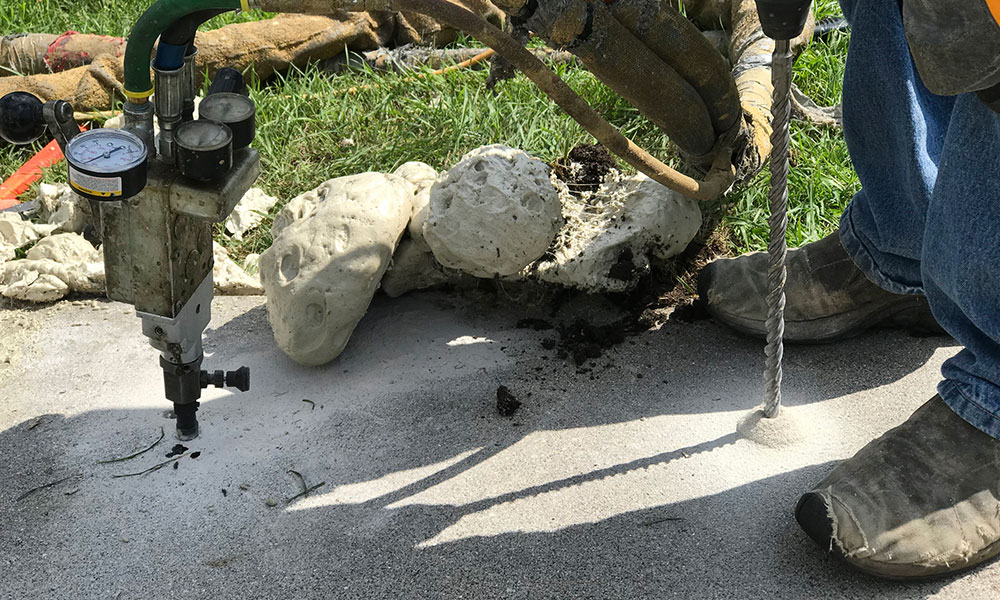Get the work done before the next deluge
Thanks to the late-spring deluge in the capital region, this June was one of Edmonton's wettest in more than a decade. About half of what was expected for the month fell in a single day. Reports of soggy basements flooded in.
If yours was one of them, we’re sorry. But there are ways to keep it from happening the next time Mother Nature plays catchup with precipitation.
Now that we’ve had some time to dry out, here’s advice from Plumber instructor Kevin Gillespie and Construction Engineering Technology instructor Kenneth Willams to help us shore up our defenses.
Assume your house is not perfect

A well-made new house should have a roof with sufficiently wide overhangs. “The more overhang you have, the more it protects the walls from the direct impact of rainfall,” says Williams.
Should water make its way beyond the exterior surface, the wall should be constructed in a way that channels it along an interior membrane to the bottom of the house, rather than letting it inside.
Even if your house is a new build, it’s best to assume it’s still vulnerable to a summer storm. That is, no matter what, assess the items below.
Level up your eavestrough game

“Make sure that the eavestrough is in good condition,” says Williams.
That means checking that it’s well secured to the edge of the roof, free of debris that can block water flow, and isn’t leaking. Follow that by ensuring that the downspouts are properly connected, also clear, and directing water at least a couple of metres away from the foundation, preferably onto an impermeable splash pad to prevent erosion.
“The farther away you go from the house, the less likely you're going to have issues.”
Fight the uphill battle

A house should always be situated on higher ground. “Make sure that you have a positive slope leading away from your basement,” says Williams, so water drains away from the foundation.
If a sidewalk slopes toward the house, mudjacking might be needed to inject material beneath a slab and lift it. But a low section of earth can be rectified by building up a positive slope yourself.
“That just requires some dirt, labour, a wheelbarrow and a shovel,” says Williams.
Pump it out

A sump pump can help protect your home from flooding – if it’s properly maintained.
This device is located in the basement, likely in a covered cavity in the floor with a pipe running from it, explains Gillespie.
When water collects in the weeping tile, a network of pipes running along the foot of the foundation of a home, it empties into that cavity, or the sump. (Alternatively, the weeping tile might be tied into the municipal sewer instead of a sump.)
When that water rises high enough, a float switch activates the pump, sending the water outdoors. (Make sure it's emptying well away from the house.)
While the pump is out of sight, it shouldn't be out of mind, says Gillespie. “You’re collecting groundwater from outside so there is the danger of silt, sand or dirt migrating in. It will collect at the bottom of your sump and that can clog your pump.”
Gillespie recommends cleaning that out annually with a shop vacuum, “preferably before the rainy season comes.” Then, he suggests testing the pump with a few 20-litre pails of water, which it should manage with ease.
If you don’t have a sump pump (many older homes don't) and want to know if you need one, your municipal water department should be able to make an assessment, says Gillespie.
If the answer is yes, you’ll likely need a contractor for the installation, which involves breaking the concrete floor of your basement.
Labour costs will vary, but a low-end pump will run less than $100, says Gillespie. One with a battery backup for power outages, or that can send alerts to your smartphone, or that has another pump to cover the possible failure of the first, will cost one or two hundred more.
“But if this is a device that’s protecting your home, just compare the cost of the sump pump to what it will cost if your basement floods,” says Gillespie. “If it’s me, I’m going to spend the money.”
Banner image by slobo/istockphoto.com